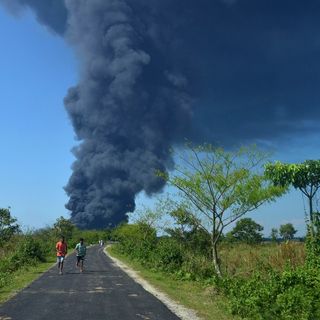Pakistan is home to over 7,000 glaciers, second only to the polar regions. 36% of these glaciers will disappear by 2100, due to global warming. Rising temperatures make these glaciers melt and form large glacial lakes. And when these glacial lakes burst over their banks, they cause deadly flash floods downstream into valleys full of civilization.
24 valleys in Pakistan are at risk of such flooding. Such floods have previously demolished orchards, damaged homes and left local agriculture systems broken, as they carry large boulders from melting glaciers. To combat this, warning systems to help evacuate citizens living in the valley and to protect livelihoods is pivotal.
All 24 valleys at risk of flooding were to receive warning systems between 2018 and 2022. The Green Climate Fund — a leg of the United Nations Framework Convention on Climate Change (UNFCC) — provided a $37 million (INR 2.8 billion) grant to create these systems. However, according to a report by Reuters, disagreements between the Pakistan Ministry of Climate Change and the United Nations Development Program (UNDP) – Pakistan has led to constant delays in the project. Plus, the Covid19 pandemic has also complicated the project’s approvals, further delaying the building of warning systems. As of now, the project is slated to start in September 2020.
“June to September [2020] will be dangerous,” Shehzad Baig, assistant director of the Gilgit Baltistan Disaster Management Authority in Hunza, told Reuters. This is because the previous winter brought heavy snowfall with it. Gilgit Baltistan received 1/3rd more snowfall over the winter than usual, increasing flood risks.
Related on The Swaddle:
The Himalayas Are Set to Lose 66% of Their Ice by 2100
In May, the residents of a village named Humza suffered flash floods left 16 families in tents, destroyed produce, and cracked all the walls built to protect the village from flooding. Humza is situated below the Shishper glacier, and according to Baig, the only available warning system for flooding there is an automatic weather station installed by Pakistan’s Meteorological Department.
“The flows became so high that they eroded the land and reached 10 feet (three meters) from my family’s home. We evacuated,” Ghulam Qadir, a resident of the village, told Reuters.
Qadir added, “We don’t care about all this bureaucratic red tape. We just want better protective walls for our village and a proper early warning system. This coming summer there will be more flooding, and people will suffer.”




